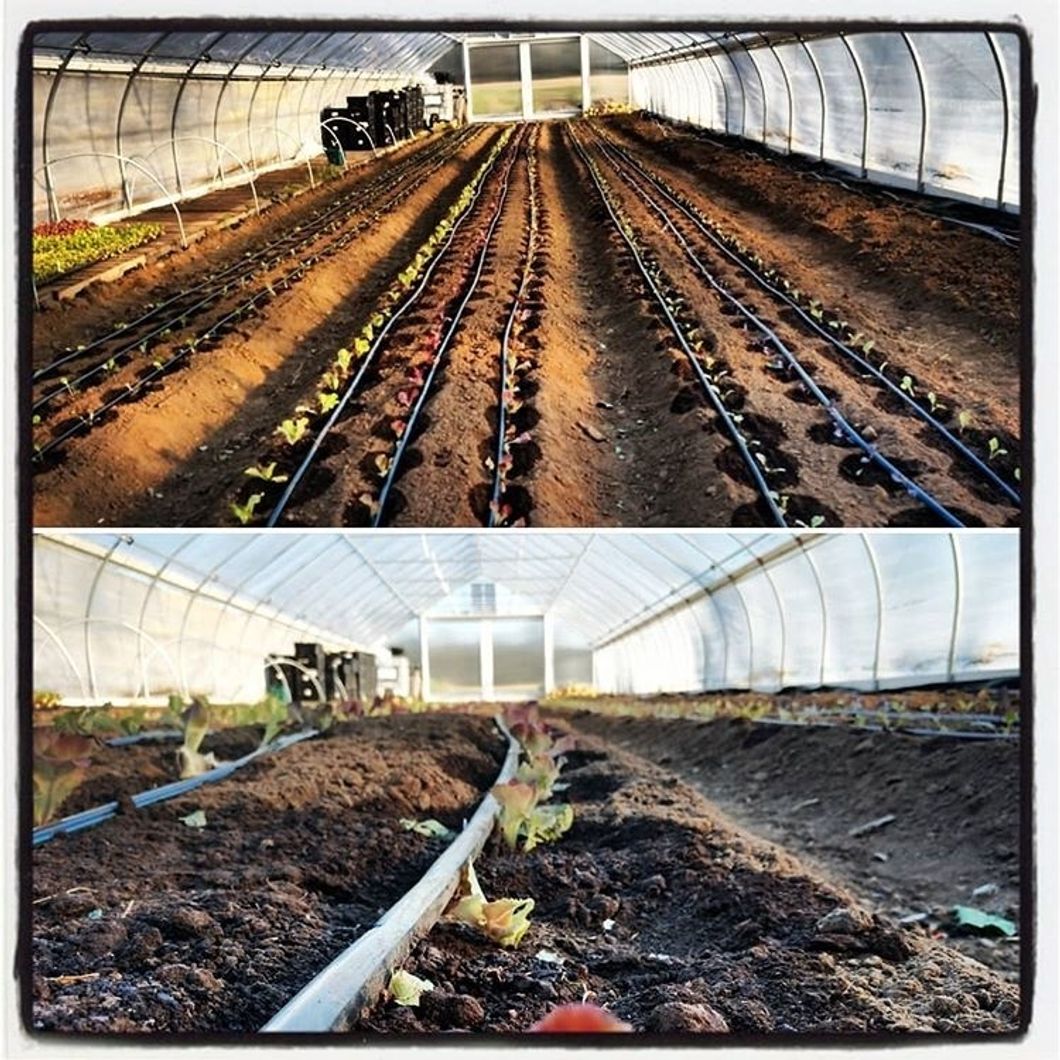This semester, I have the opportunity to intern in a greenhouse. Plants like the cold weather even less than we do, meaning that I have only just begun these past two weeks helping with my school's sustainable farming operation. But in the brief time that I have been there, I have learned about not only the tedious process of persuading seeds to shoot their shot and germinate but also about my own use of time.
When I walk into the greenhouse after my classes, I am grateful for the warm, humid air that feels like a hug after the cold winds of Ohio. It's located on the corner of campus and looks small and nondescript on the outside. Inside, it is sectioned into several rooms, some organized with neat rows of crops to test a variety of specific conditions, and others surrendered to a microcosm of a rain forest with tropical plants and vines.
I have been working with other interns and employees of Miami's Institute for the Environment and Sustainability to grow vegetables that we will eventually distribute to members of the community through a CSA, a community supported agriculture program. This means that people in the community can subscribe to receive weekly boxes of these vegetables while they are in season. It allows people to get affordable, local produce and support small farms. Similar operations are offered in communities across the country.
I love vegetables probably more than the next person, eating more than my share at the dining hall. But my affinity for plants never translated to an ability to grow them. I had tried growing herbs only to be at a loss once they outgrew their pots. I have grown tomatoes but underestimated their eagerness and was overwhelmed with what quickly became a thick, dense forest of too many tomato plants and rotting fruit.
In my brief time participating in the greenhouse, I have been surprised by the variety of tasks necessary to grow the vegetables and the detail they require. Plants have had a lot of time to evolve and figure out how to grow yet are still picky about when they will give it a try. But once a seed germinates, that's its chance, and if its life doesn't work out, then it's all over. It makes sense that it is a little scared of commitment. For this reason, we sift the soil, have a recipe for the soil at each stage of the plant's life, water them gently, and even keep them tucked under light blankets so they can hold on to water easier.
I see everything I have learned in textbooks be applied and have realized that reading about the lift of the plant does not really prepare you to be a good plant parent. The directors of the greenhouse that have been doing this for years and are such a well of plant-knowledge that I am convinced they can talk to them.
I am grateful for and excited about my afternoons in the greenhouse, doing small repetitive tasks that require focus yet allow my mind to wander. Time can fly as we listen to '90s hip-hop, or it can slowly pass by, giving me a much-needed break from writing notes and looking at a screen. Getting dirt under my nails and breathing in the smell of soil is a form of stress relief that I had not expected, but I can't help but look forward to.
The meticulous care of plants is something beautiful and critical; ultimately all energy we consume comes from plants. Even if you eat animals, they ate plants. Life depends on our understanding of sunlight, water and the earth. And I am lucky to get to spend more time watching it all work.

















